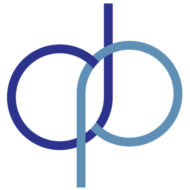Determination of t-PA in purified preparations with Chromogenic Substrate S-2288™
Measurement Principle
Tissue plasminogen activator (t-PA) is a serine proteases, which activates plasminogen by splitting a single Arg-Val bond of the plasminogen molecule. In purified systems these enzymes have been shown to hydrolyze tripeptide chromogenic substrates. The t-PA activity is thus determined by the rate at which p-nitroaniline (pNA) is released. The formation of pNA can be followed spectrophotometrically at 405 nm by using a recorder (initial rate method). The correlation between the change in absorbance per minute (ΔA/min) and the t-PA activity is linear in the 0.05 – 0.5 µkat/l or 3 – 30 U/l range. The amidolytic activity does not necessarily parallel the fibrinolytic activity for different t-PA preparations.
t-PA
H-D-Ile-Pro-Arg-pNA + H2O → H-D-Ile-Pro-Arg-OH + pNA
Reagents
- Chromogenic Substrate S-2288, 25 mg Art. No. S820852
Reconstitute the chromogenic substrate S-2288 (MW: 577.6) with 8.65 ml (t-PA one-chain) or 43 ml (t-PA two-chain) of distilled water. - Tris Buffer, pH 8.4 (25°C)
Tris 12.1 g (100 mmol/l)
NaCl 6.2 g (106 mmol/l)
Distilled water 800 ml
Adjust the pH to 8.4 at 25°C by adding an appropriate amount (approximately 44 ml) of 1 mol/l HCl. Fill up to 1000 ml with distilled water. The buffer, if not contaminated, is stable for six months at 2-8°C. - Acetic acid 20%
Acetic acid is used in the acetic-stopped method.
Sample
Purified tissue plasminogen activator is dissolved in buffer to an enzyme activity of 0.05 – 0.5 µkat/l (3 – 30 U/l). See Note. It has been advised to use a surfactant to avoid adsorption to surfaces. A final concentration of 0.1 g/l of Triton X-100 is recommended.
Method
Initial rate method
| Buffer | 200 µl |
| Incubate at 37°C | 2-4 min |
| Diluted sample (20-25°C) | 200 µl |
| Incubate at 37°C | 2-4 min |
| Substrate (37°C) | 200 µl |
| Mix |
Transfer sample immediately to a 1 cm semi-microcuvette (preheated to 37°C) for measurement of the absorbance change in a photometer at 405 nm and at 37°C.
Calculate ΔA/min.
Calculation
The t-PA activity in the prepared tissue plasminogen activator solution is calculated from the following formulas:
µkat/l = ΔA/min x 5.21
U/l = ΔA/min x 313
Note:
In the test (600 µl) 0.25 µg (100 IU) of the porcine heart tissue plasminogen activator gives:
ΔA/min ~ 0.012 (one-chain)
ΔA/min~ 0.065 (two-chain)
Bibliography
- Friberger P et al. Activity of plasminogen activators on tripeptide chromogenic substrates. In: Progress in Chemical Fibrinolysis and Thrombolysis. Vol.4. Davidson J.F. et al (eds): Churchill Livingstone, 149-153 (1979).
- Friberger P: Chromogenic Peptide Substrates. Scand J Clin Lab Invest 42, suppl. 162 p 57 (1982).
- Verheijen JH et al. Quantitative analysis of the composition of mixtures of one-chain and two-chain tissue-type plasminogen activator with a spectrophotometric method. Thromb Res 39, 281-288 (1985).
- Dodd I et al. Isolation and preliminary characterisation of active B-chain of recombinant tissue-type plasminogen activator. Thromb Haemost 55, 94-97 (1986).
- Rijken DC and Groenveld E. Isolation and functional characterisation of the heavy and light chains of human tissue-type plasminogen activator. J Biol Chem 261, 3098-3102 (1986).
- Mitsubayashy S et al. Plasminogen activator in bladder tumors. Urol Res 15, 335-339 (1987).
- Sugawara Y et al. Kinetic analysis of the enhancement of the activities of t-PA induced by the presence of monoclonal antibody (C9-5). Thromb Res 50, 637-646 (1988).
- Urano T et al. Stimulation of the amidolytic activity of single chain tissue-type plasminogen activator by fibrinogen degradation products: possible fibrin binding sites on single chain tissue-type plasminogen activator molecule. Biochim Biophys Acta 1077, 245-252 (1991).
- Ball EL et al. Selection of monoclonal antibodies that bind and inhibit tissue-type plasminogen activator. Hybridoma 12, 317-326 (1993).
- Feng YH and Hart G. In vitro oxidative damage to tissue-type plasminogen activator: a selective modification of the biological functions. Cardiovasc Res 30, 255-261 (1995).
- Higazi AA et al. Identification of an inhibitor of tissue-type plasminogen activator-mediated fibrinolysis in human neutrophils. A role for defensin. J Biol Chem 270, 9472-9477 (1995).
